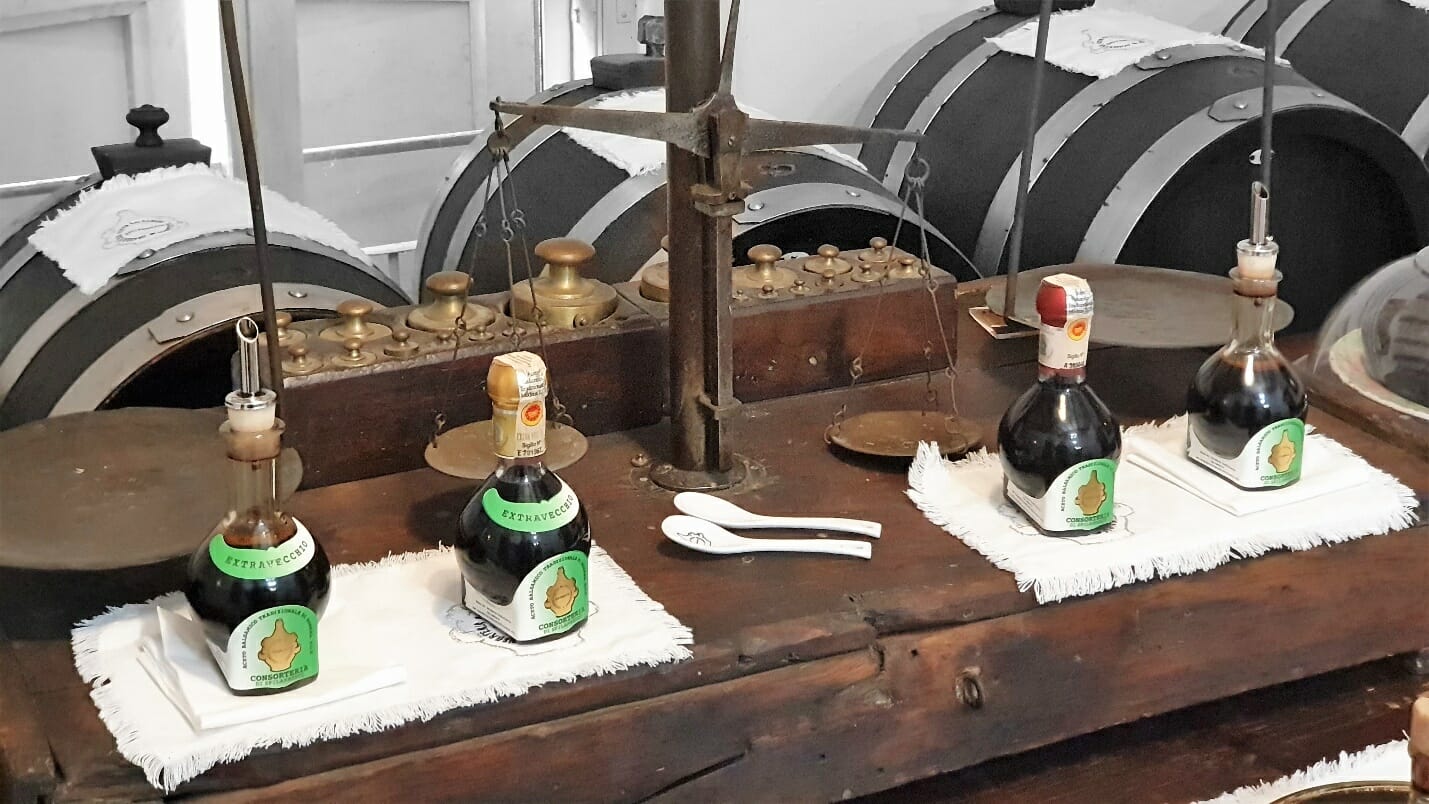Balsamic vinegar is a unique product with a thousand-year history: it’s called “black gold” and is famous all over the world. Modena is rightfully proud of its signature delicacy and is anxious to share it. In fact, Modena’s balsamic vinegar is known all over the world, but it deserves to be experienced in greater depth, from its origins in the vineyard to the table (and beyond).
Do you know that balsamic vinegar is a fantastic ingredient? You can use on meat as on fruit or to flavor salad and ice cream and even in a cocktail… and you can choose a very expensive 20 year aged PDO, a cheaper but high-quality PGI, a cream, or a flavored cream (from truffle to berry, black or white)… the most important thing is that it must be a true Italian Balsamic vinegar from Modena! Let discover how many types of balsamic vinegar you can buy..
The history of Traditional Balsamic Vinegar is inextricably linked to the Modena area but its origins date back to a distant time, spanning centuries, customs, and definitions. The production and consumption of vinegar date back to very ancient times: already around 4000 BC. the Babylonians obtained it by fermenting dates, figs, apricots and using it as a condiment or to preserve other foods.
In the third millennium BC must and vinegar, obtained from various fruits, were in common use throughout the Near East, in Mesopotamia, Palestine, and Egypt. It was the Greeks – expert winemakers – who introduced the cultivation of the vine in all the territories of Magna Graecia, and from them, the Romans learned to produce wine and, as a secondary product, vinegar. In Rome and in the Empire this was used for the preservation of food, as a medicine and as a condiment, so much so that the acetabulum, the ampoule containing vinegar, was always present on all tables.
Over time, then, man has intervened on the simple ‘vinegar’ product to modify its characteristics and make it more palatable in domestic use. Thus the ‘special’ vinegars appeared together with the ‘aromatic’ ones: the muscat vinegar, the rosemary, vanilla, rose vinegar, the Sanfar vinegar, the one of the four or seven thieves, and many others. Among these, characterized and distinct from each other both for the raw material used and for the additives and the different production methods, the ‘Modena-style won.
Balsamic Vinegar of Modena (Aceto Balsamico di Modena) is produced from grape must that is fermented and/or cooked and/or concentrated. The grapes comes only from Lambrusco, Sangiovese, Trebbiano, Albana, Ancellotta, Fortana and Montuni vines.
To the grape must are added wine vinegar, in the minimum amount of 10%, and an amount of at least 10-year-old aged vinegar.
The minimum percentage of grape must is 20% of the total quantity of the product to be sent to processing. The concentration is carried on until the initial mass of must reaches a density no lower than 1.240 at a temperature of 20°C. In addition to coming from the vines listed above, the musts – only the cooked and concentrated ones – must have a minimum total acidity of 8 gr/kg and a minimum net dry extract of 55 gr/kg. Caramel may be added for color stability, up to a maximum of 2% of the finished product. No other substances may be added.
To get to know and taste the “black gold” of Modena, you can visit a private balsamic vinegar factory, a municipal vinegar production (acetaia comunale) or the Museo del Balsamico in Spilamberto




